TRADITION’s 2025 Book Endorsements
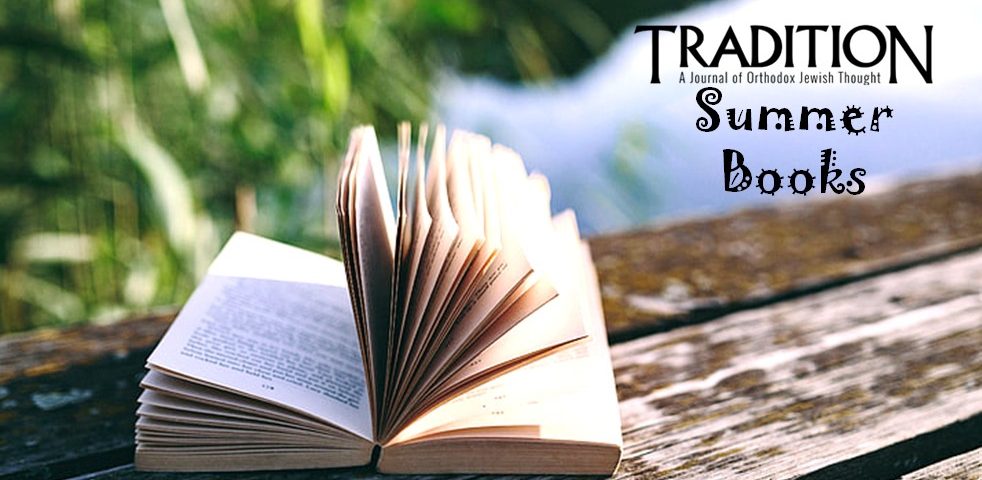
 For the sixth year running, TRADITION continues its yearly tradition of turning to our esteemed editorial board for endorsements for summer reading. Some may be amused to think of a seaside read with the 29 tomes our team chose, but that’s what you get from TRADITION’s thought leaders: sometimes surprising suggestions, but always reading worthy of your attention.
For the sixth year running, TRADITION continues its yearly tradition of turning to our esteemed editorial board for endorsements for summer reading. Some may be amused to think of a seaside read with the 29 tomes our team chose, but that’s what you get from TRADITION’s thought leaders: sometimes surprising suggestions, but always reading worthy of your attention.
What follows is our first installment; another set of recommendations will appear on TraditionOnline on Tuesday (read it here), and we’ll conclude on Thursday when we’ll also reveal the winner of our contest to predict our picks (read it here).
Jeffrey Saks, Editor
Yosie Levine, Hakham Tsevi Ashkenazi and the Battlegrounds of the Early Modern Rabbinate (Littman Library of Jewish Civilization)
Hayyim Angel
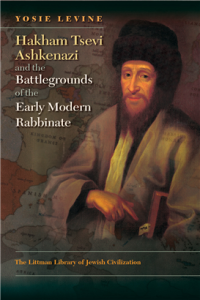
Hakham Tsevi Ashkenazi and the Battlegrounds of the Early Modern Rabbinate
Like many rabbinical students, I had heard of Hakham Tzevi Ashkenazi (c. 1658-1718) regarding his halakhic rulings on the second day of Yom Tov observance in Israel (everyone physically in Israel should observe one day), and that a chicken must have a heart, even if one cannot locate the heart after slaughtering the chicken (relevant for discussions of organ transplants). Other than a few of his celebrated rulings, he remained fairly obscure to me. Now, Rabbi Dr. Yosie Levine’s excellent book has brought Hakham Tzevi into view. Levine combines historical sources and discussion of halakhic rulings to paint a portrait of a great posek who was also a colorful personality. His book is lucid, balanced, and moves at a good pace. It is also significant that Levine, in addition to his academic historical training, is a successful practicing rabbi at a prominent pulpit in a cosmopolitan area (Manhattan’s Jewish Center), and his extensive Torah learning enables him to access the rabbinic writings of Hakham Tzevi as an insider.
Hakham Tzevi combined his own Ashkenazic background with Sephardic elements picked up from his rabbinical studies in the yeshivot of Constantinople and Salonika. At the level of pesak and educational policy, he combined the strengths of both worlds. He hewed closely to classical rabbinical texts and followed them, regardless of established customs. For example, he wanted to abolish the Ashkenazic practice of refraining from kitniyot on Passover, since there is no classical rabbinic source to justify this prohibition. He accepted the Sephardic ruling of women not reciting blessings on time-bound positive commandments, against the ruling of the Tosafists that women should recite those blessings. More broadly, he preferred the Sephardic curriculum that gave more attention to Tanakh and Jewish Thought.
Deeply steeped in Jewish mysticism, Hakham Tzevi opposed the abuses that arise from popular Kabbalah. He also decried those who followed religious practices of the Zohar when they conflicted with talmudic rulings. His diverse background enabled him to garner respect from the Sephardic and Ashkenazic communities of cosmopolitan Amsterdam. He formed strong opinions and did not shy away from controversy. He defended Hakham David Nieto (Amsterdam and London) from accusations of Sabbatianism, and also accused a certain Nehemiah Hayon for having Sabbatian views. Hakham Tzevi encountered increasingly powerful lay boards, who did not always support their rabbi’s involvement in controversies. Perhaps not surprisingly, he never held a pulpit for longer than three years.
And indeed, Levine devotes a chapter to the responsa of Hakham Tzevi that became popularized in the modern era, including his ruling on the second day of Yom Tov while in Israel, and the heartless chicken and its relevance in recent halakhic discussions of organ transplants. Levine’s valuable contribution has much relevance to understanding the religious roots of our modern times.
Bernhard Schlink, The Granddaughter: A Novel (Harper Collins)
Judith Bleich
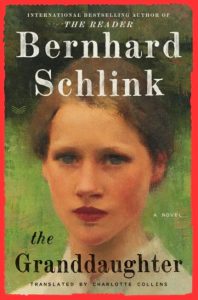
The Granddaughter
A tourist browsing in Berlin bookstores might be surprised to see a disproportionately large selection of Judaica. Indeed, most of those books are bought by non-Jews rather than Jews. The notable German jurist and fiction writer Bernhard Schlink, whose best-selling novel The Reader is Holocaust related, also authored an arresting short story titled “The Circumcision” that reveals a fascination with Jewish themes. In a 2012 interview, Schlink candidly stated: “I can’t say I’m thankful about being German because I sometimes experience it as a huge burden. But it is an integral part of me and I wouldn’t want to escape it. I have accepted it.”
Schlink’s most recent book, The Granddaughter (translated by Charlotte Collins), is a narrative depicting the quest of Kaspar, a widower, to create a bond with and enlighten his deceased wife’s radicalized granddaughter who has been raised in a rural far-right environment. The work has weaknesses as a novel but is superb in its portrayal of the legacies of World War II, of the saga of German reunification and the lingering problems and inequities of a fragmented nation, as well as of the mindset of contemporary neo-Nazi youth.
The plot is somewhat contrived and the character of the granddaughter herself not fully realized. However, the writing flows and many sections are quite engrossing. Particularly moving is the manner in which the intergenerational relationship unfolds. The situation is fraught with tension. The dilemma facing Kaspar is how to influence the young woman without forcing her to accept his Weltanschauung and how to continue to play a formative role in her life without overly antagonizing her fanatical parents. Very gently, Kaspar attempts to expose her to broader cultural perspectives and seeks to find common ground in their shared appreciation and love of music. The progress is far from linear, and we can but wonder whether his dogged efforts have met with success.
Several reviewers have found the lengthy descriptions of the countryside tedious, but those lyrical passages enhance the story because they express Kaspar’s genuine affection for his homeland, crucial to understanding his deep fears and profound concern for the future of his country’s young people.
Schlink’s remarkable achievement is that, despite his unflinching honesty both regarding the weight of the past and the difficulties of the present, his book leaves us with feelings of optimism and the hope that, overcoming the depredations of history, decent and moral individuals will yet prevail.
Montse Leyra Curiá, In Hebreo: The Victorine Exegesis of the Bible in the Light of its Northern-French Jewish Sources (Brepols)
Michael A. Shmidman, Editor Emeritus
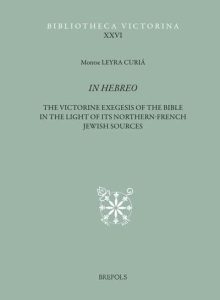
In Hebreo
The stated objectives of Montse Leyra Curia’s In Hebreo include, among others: identifying previously unnoticed parallels between in hebreo (“according to the Hebrew”) references of the Victorine Christian biblical exegetes and the interpretations of the Northern-French Jewish pashtanim and ascertaining whether noted twelfth-century Victorine scholars employed any of the linguistic principles and literary-rhetorical devices characteristic of their Jewish counterparts.
Focusing in particular upon parallels in vocabulary, content, and literary techniques, Leyra Curia meticulously and systematically analyzes all in hebreo interpretations in the commentaries of Hugh and Andrew of Saint Victor on Genesis, Exodus, Leviticus, Judges, and Samuel. Of particular interest would be the lengthy chapter that explores comments apparently derived from the works of Jewish exegetes of Northern France, including Rashi, Joseph Qara, Rashbam, and Bekhor Shor. The author also examines comments parallel to in hebreo interpretations of the Victorines found in commentaries by Ibn Ezra and Radak, as well as in other rabbinic sources. A highly useful table charts the total in hebreo interpretations—and their likely sources—found in the commentaries of Hugh and Andrew under discussion.
The author’s mastery of Latin sources and solid grasp of the Jewish sources enables her to thoroughly analyze the evolution of most of these interpretations, sometimes brilliantly distinguishing among in hebreo interpretations derived from Latin sources, those learned orally from contemporary Jewish exegetes, or others based upon variant Latin translations of the biblical text. Her attempts to demonstrate that there is “a high probability” that Rashbam was in direct contact with Hugh and Andrew, “a slight possibility” that Hugh might have met Joseph Qara and learned from him, that it is “plausible” that Bekhor Shor transmitted Jewish interpretations to Andrew who “may have learnt from Ibn Ezra himself,” are most intriguing and supported by a fair amount of circumstantial evidence. Such speculation, however, remains inconclusive, just as it remains difficult to determine with certainty whether Ibn Ezra interacted with his contemporary Rashbam, and how familiar—if at all—each may have been with the other’s commentary on the Torah.
Certainty concerning the precise sources of in hebreo parallels can be an elusive goal as well, even when the comments of the Victorines and those of a particular Jewish exegete may appear to be in harmony. As the author herself notes: “The possibility that another as yet unidentified Jewish author transmitted that particular interpretation cannot be excluded.” The author also correctly notes that numerous manuscripts from Northern-French Jewish exegetes (I would add Spanish Jewish commentators as well) have not survived or only recently were discovered, making identification of the sources of some in hebreo citations difficult or tentative.
Despite the above reservations, this voluminous and comprehensive work clearly contributes significantly “to the larger questions of the place of the Hebrew text in medieval Latin Christian biblical interpretation and of the Christian and Jewish scholarly interaction in medieval Europe.”
Chaim Grade, Sons and Daughters: A Novel (Knopf)
Lawrence A. Kobrin
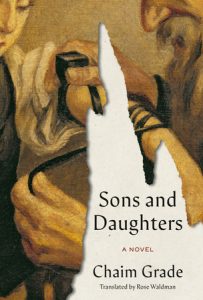
Sons and Daughters
To recall and amend a famous antacid commercial, “I can’t believe I read the whole thing.” That is how I celebrated my completion of Chaim Grade’s Sons and Daughters, the recently assembled and translated Yiddish novel of over 700 pages. It was worth the effort. The multi-year saga of the effort to assemble, translate, and release the book has received considerable publicity. The complexities involved can be seen in the work we now have, for they comprise less of an integrated novel than a series of episodic vignettes, often only loosely connected. The fact that much of the material was originally serialized in the Yiddish press is evident.
Several reasons make the long read worthwhile. The window into pre-Holocaust Eastern Europe is enlightening. We tend to fantasize or romanticize our thoughts about this period to see it as a uniformly religious and homogenous community. The actuality, as reported by Grade, was far different. Inter-generational tensions, the push to secularization, and the fight over Zionism divided the community and families. It is interesting to speculate how these communities and their families might have developed if the horrors of the Holocaust had not intervened. Would Poland and Latvia have become another United States in terms of their Jewish communities? One wonders.
The genius of Grade’s writing goes beyond its Jewish component. His depictions of family tensions and squabbles, the inner workings of young people seeking a mature life, sibling rivalries, and the challenges of age, all occupy central parts of the many stories included. As a result, the narrative frequently reads as if it had been written last week in terms of the human beings involved and their feelings and motivations. Unfortunately, I cannot read Yiddish, but I had the sense that the original was a clear parallel to the tone and mood of S.Y. Agnon’s works in Hebrew, where a classical style is put to the service of a contemporary story. We can all be grateful to the many who worked over many years to bring this publication to its modern readership.
Mordechai Z. Cohen, The Rule of Peshat: Jewish Constructions of the Plain Sense of Scripture and Their Christian and Muslim Contexts, 900-1270 (University of Pennsylvania Press)
Uriel Sussman, Editorial Assistant
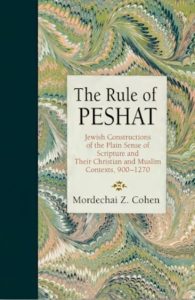
The Rule of Peshat
While many works of biblical exegesis have been published in recent decades, few can match the breadth of Mordechai Z. Cohen’s The Rule of Peshat. Effortlessly moving between the Muslim and Karaite milieu of the Geonic-Andalusian tradition and the Christian backdrop of French biblical commentary, Cohen offers a more complete narrative of the history of Jewish biblical exegesis in the medieval era. Cohen’s innovation, however, lies not in his expert synthesis of disparate traditions but in his novel framework: asking how each interpreter understood the talmudic maxim that a verse cannot depart from its plain sense (peshat). Focusing on understanding a self-defined project through programmatic statements and countless examples allows Cohen both to create a more precise picture of the development of the peshat project within schools and to detect the influence of an interpreter’s cultural milieu on his work. As Cohen notes in his introduction, this methodological choice also helped him avoid the all-too-common error of judging the quality of an exegete’s work by anachronistic standards.
Each chapter focuses on a significant personality or school within the world of peshat interpretation. Beginning with rationalist Geonim and their Karaite counterparts, who imbibed Muslim exegetical philosophy (willingly or not), he moves to the well-known French figures of Rashi and Rashbam, who may display awareness of their Christian counterparts. We then encounter the newly discovered Byzantine school which may serve as a missing link in the exegetical tradition, examining their cultural context and influences and exactingly determining how they perceived their own interpretive project.
Drawing from his earlier research on Rashi and Maimonides, Cohen’s sense of each exegete’s project is well honed and convincingly argued demonstrating his thesis that the concept of peshat and its relationship to other forms of interpretation—whether midrashic, halakhic or kabbalistic—was neither uniform nor static, varying widely across time and place. For readers seeking an introduction to the world of the major figures of medieval Jewish biblical exegesis and a conceptual framework for placing lesser-known voices, Cohen’s book is essential reading. Its insight not only into the history of biblical exegesis but to the way medieval Jewish exegetes thought about their work will undoubtedly pave the way for many future studies.
Aliza Lavie, Iconic Jewish Women: Fifty-Nine Inspiring, Courageous, Revolutionary Role Models for Young Girls (Gefen)
Sarah Rudolph
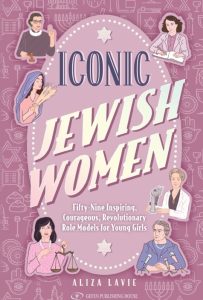
Iconic Jewish Women
The first important contribution of Aliza Lavie’s Iconic Jewish Women is the very idea that a child might give serious thought to Jewish women across the centuries and the values they represent, consider what speaks to her, and design a unique celebration of those values—and Lavie’s creativity in envisioning what these celebrations might look like is astounding. While projects involving hesed or Torah study have become commonplace in advance of bat (or bar) mitzva celebrations, for many, there seems to be a large focus on the party as a party. Suggesting that we call on the young woman herself to transform the event into a celebration of something bigger and deeper, and more personal, is huge. As my 14-year-old son observed when I showed him the book, there should be something similar for boys! (The irony of a boy being jealous of a girl’s coming-of-age opportunities should not be lost on any of us.)
So why am I promoting this collection, whose intended audience is approximately 11 years old and female, to a list aimed at adults of any gender? For one thing, it is the adults who will need to first get used to the possibilities Lavie presents, and we will have to help our girls do it. The book’s introduction includes a section headed “For the Adult Reading This Book with the Bat Mitzvah Girl”; apparently, the intended audience does include adults, and for good reason. A preteen will likely need support and guidance to work through Lavie’s collection of biographies and creative suggestions; moreover, the author does not shy away from harsh or controversial aspects of her subjects’ lives, and every parent will have to decide whether and how to present the book to her or his daughter.
I learned this the hard way when, apparently having forgotten some of the juicier bits (or perhaps how early they appear), I decided to “test” the book on my own ten-year-old daughter. Within minutes, she asked me what “rape” means, read me a selection about a spy who attempted suicide rather than risk succumbing to torture, and came upon a description of one woman who “grew up in a religious home in New York and had always been angry that she had to sit in the women’s section.” I wouldn’t want her to read any of that alone, without discussion and context.
But even beyond the intended youthful reader and her parents or other adults in her life, Lavie’s book is valuable for any adult. Few of us will recognize all 59 names in the book, or much less each woman’s story and legacy. Lavie, an educator and former Member of Knesset, has compiled a tremendous wealth of information for anyone who cares about Jewish history, women, or women’s contributions to history—which I hope includes us all. Presented in short, engaging bursts, her biographies are perfect summer reading and may even inspire us to create our own events and celebrations at any age.
Aryeh A. Frimer, Departing Egypt: Passover Haggada (Urim)
Dov I. Frimer
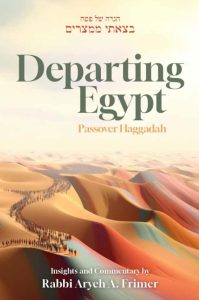
Departing Egypt
Yes, full disclosure: Rabbi Aryeh Frimer is my brother. And as his younger sibling—a middle child at that—it was only natural that I approach this volume with a predisposition towards being critical. Yet, the truth I could not deny: Aryeh had produced a simply excellent work with a wealth of edifying information, written in an engaging and energizing style. For as long as I can remember, R. Frimer, today Professor Emeritus of Chemistry at Bar-Ilan University, would devour Haggadot, reading them whenever he had the opportunity. As the Assistant Director of Harvard Hillel, while studying for his doctorate, he began delivering regular lectures and classes on the Haggada. This was especially so on Shabbat Ha-Gadol, immediately prior to Passover, when he would give the annual Shabbat Ha-Gadol Derasha to his community and colleagues. He would present and develop the probing analysis of the various commentaries of the ages, to the intellectual, psychological, and emotional themes which emerge from the verses of this centuries-old text. Indeed, he continues this practice to this very day.
However, the work is accurately defined as “Insights and Commentary.” It is not merely another collection of various commentaries. Aryeh, uses the Haggada’s text and the words of commentaries as a springboard for insightful discussion of many fundamental concepts of Jewish faith and theology; concepts such as, inter alia: slavery, suffering, sacrifice, freedom, obedience to God and Jewish Law, reward and punishment, anti-semitism, national historical memory, redemption, and the centrality of the Exodus experience. He pays special attention to the ebb and flow of the Haggada and its structure, both halakhic and literary, and to how the author of the text shapes our emotional journey as we proceed through the night and the Seder.
The volume is in essence a collection of short essays which can appropriately be read and studied at all times of the year, not just around Passover. It is both an enjoyable read and a wonderful study tool. It is unquestionably the type of read that one will be glad that he undertook over the summer.
Aharon Lichtenstein, Leaves of Faith: The World of Jewish Learning (Ktav)
Menachem Genack
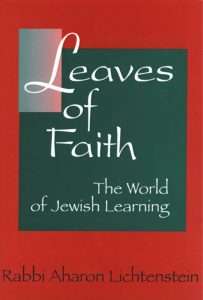
Leaves of Faith
Leaves of Faith: The World of Jewish Learning was the book I most wanted with me as we recently commemorated the tenth yahrzeit of its author, Rav Aharon Lichtenstein zt”l. Re-reading these essays in light of that milestone was a reminder of R. Lichtenstein’s towering persona: the same fusion of penetrating lomdus, literary elegance, and moral gravitas that marked his spoken word animates every line of his prose.
Two essays dominate the opening section. In “The Rav at Jubilee” (originally published in TRADITION), and its companion piece, “The Rav in Retrospect: Divrei Hesped,” R. Lichtenstein sketches his rebbe, R. Joseph B. Soloveitchik zt”l, with a blend of filial devotion and critical clarity. He stresses the Rav’s mastery of kol ha-Torah kula, noting that it was never confined to the “yeshivishe” realms of Nashim and Nezikin; the Rav once confided that his “best” masekhta was Keilim. While the Rav famously opened new doors of conceptual analysis in Berakhot and Seder Moed, those achievements were expressions, not limits, of a panoramic command of Shas. R. Lichtenstein had a similar breadth of knowledge; it is said that on his application to Yeshiva University, under material previously studied, he listed simply, “Tanakh and Shas.” Whether or not this story is apocryphal, it is illustrative.
R. Lichtenstein also emphasizes the Rav’s fluency in mathematics, science, and philosophy, disciplines that enriched rather than diluted his Torah. That breadth mattered deeply to R. Lichtenstein, whose essay “Synthesis from a Torah Point of View” argues that general knowledge is integral to forging the complete religious personality.
No less moving is his hesped for R. Shlomo Zalman Auerbach zt”l. In this brief essay, R. Lichtenstein compares R. Shlomo Zalman to R. Moshe Feinstein and elaborates on the qualities required for a posek. R. Lichtenstein tore keria upon hearing of the posek’s passing, a sign of his reverence for a gadol that he came to view as a teacher. We encounter similar reverence when he refers to another of his teachers, R. Ahron Soloveichik, and his tributes inspire in us not only an appreciation for the greatness of these figures but also a recognition of his own humility. In fact, his appreciation for those teachers reflected his own greatness—both because his genius allowed him to recognize the genius of others and because he had the humility to seek out greatness from others.
Beyond these portraits, the volume offers classic essays on the conceptual approach to learning and the goals of Talmud study—subjects that defined Rav Lichtenstein’s life-work. Each piece blends Brisker precision with humanistic sensitivity, a combination still rare in Torah literature. Reading Leaves of Faith now, in the shadow of R. Lichtenstein’s tenth yahrzeit, is a reminder of his unique synthesis of humanism, knowledge, humility, and uncompromising devotion to Torah.
Sandra Fox, The Jews of Summer: Summer Camp and Jewish Culture in Postwar America (Stanford University Press)
Ellie Glickman, Editorial Intern
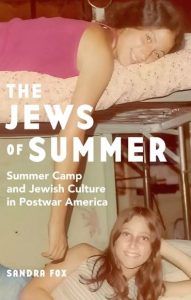
The Jews of Summer
As summer approaches, thousands of Jewish youth will migrate to the open woods to reconnect with nature, find forever friendship, and immerse themselves in Jewish community. However, many are unaware or underestimate the historical impact Jewish summer camping has had on the continuity and vibrancy of Jewish-American culture. Sandra Fox’s The Jews of Summer explores the use of Jewish summer camping in the creation of a new American-Jewish cultural identity after World War II. She traces the history of the Zionist, Yiddish, Conservative, and Reform camping movements and examines their methods in producing the next generation of leaders through effective ideological immersion. The author, a historian, portrays the urgency for communal re-invention without the example of European Jewry and the uncertainty of Israel’s future. During this time of upheaval and loss, creating effective Jewish camp experiences was a matter of cultural survival.
From the joys of summer romance to the sorrows of Tisha B’Av, The Jews of Summer dissects the full range of the camp experience. Fox illuminates the pedagogical rationales and strategies of programming the weeks in the rhythm of camp life. These emotional highs and lows are not simply moments in the summer, but educational opportunities for promoting everything from Jewish marriage to navigating conversations about the morbid reality of Jewish history. Throughout the book, many other instances are also unpacked in which camp leaders strategically advance their educational and communal aspirations.
Published in 2023, The Jews of Summer is the first academic book to fully examine the impact of American Jewish summer camps. An outgrowth of the author’s doctoral work, she expands on her research and elaborates on some of the discourses in closing down summer camps in the summer of 2020 as a result of the COVID-19 pandemic.
Despite its large amounts of research and quantity of information, The Jews of Summer is easy to follow and consistently engaging. The book is interspersed with anecdotes and memories from alumni of these summer camps. These personal additions are both nostalgic and a powerful reminder that behind every program is a real person, shaped by summers that fostered Jewish identity and growth. As the Jewish summer camping movement continues to thrive, it is crucial to reconnect with the initial intentions behind these organizations. By honoring the generational legacy of these summer camps, we can continue to empower and inspire the Jewish youth.
This is the first of three installments in this feature. Read the next batch here, and see the final round here. Peruse our previous lists of TRADITION’s Summer Book Endorsements.
